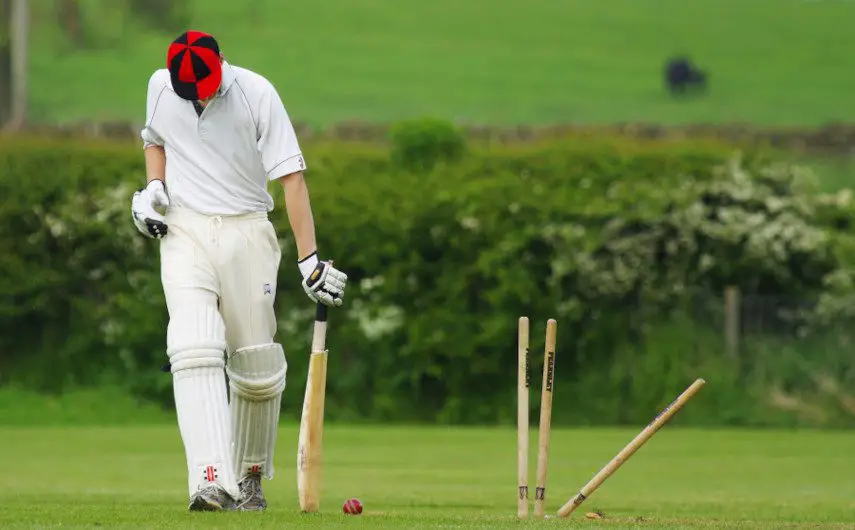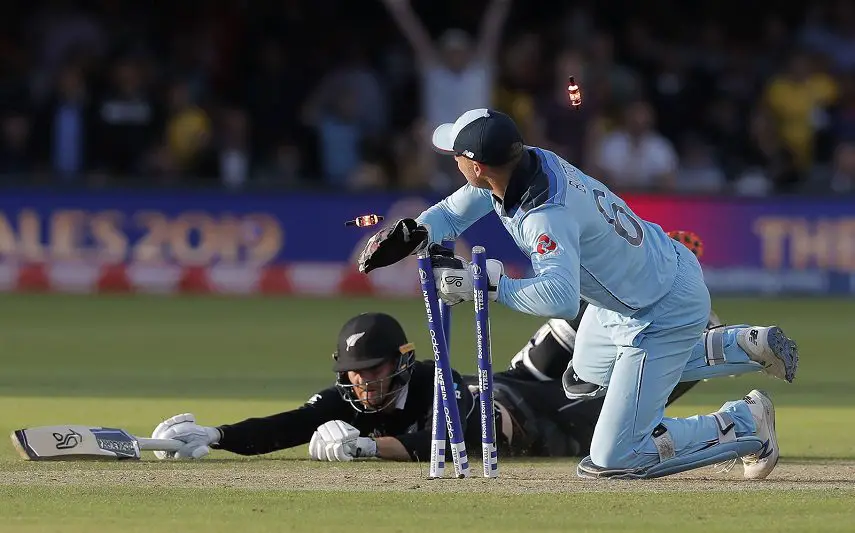Table of Contents
It’s a fast-paced version of the outdoor game and it’s growing in popularity thanks to the ability to play all year round. But what is indoor cricket and what are the rules?
What is Indoor Cricket?
Indoor cricket is a game played indoors, in an enclosed area. Indoor cricket is a distinct sport of its own as opposed to regular cricket which may be played in an enclosed stadium with a closed roof.
The game generally follows the laws of cricket but it is a sport in its own right so there are some distinct differences.
How is Indoor Cricket Different?
- Indoor Cricket has six players per side: Regular cricket has 11 on each team
- Matches last 90 minutes as opposed to a minimum of three hours in outdoor cricket
- Springback stumps are used
- A yellow ball is used and it is softer than the regular red, white or pink cricket balls
- Pitch areas in indoor cricket measure 30 metres by 12 metres
- The pitch area is enclosed by tight netting
- There are literally no delays other than for injury
- Batters do not have to leave the game if they are dismissed. Instead, five runs are deducted from the total.
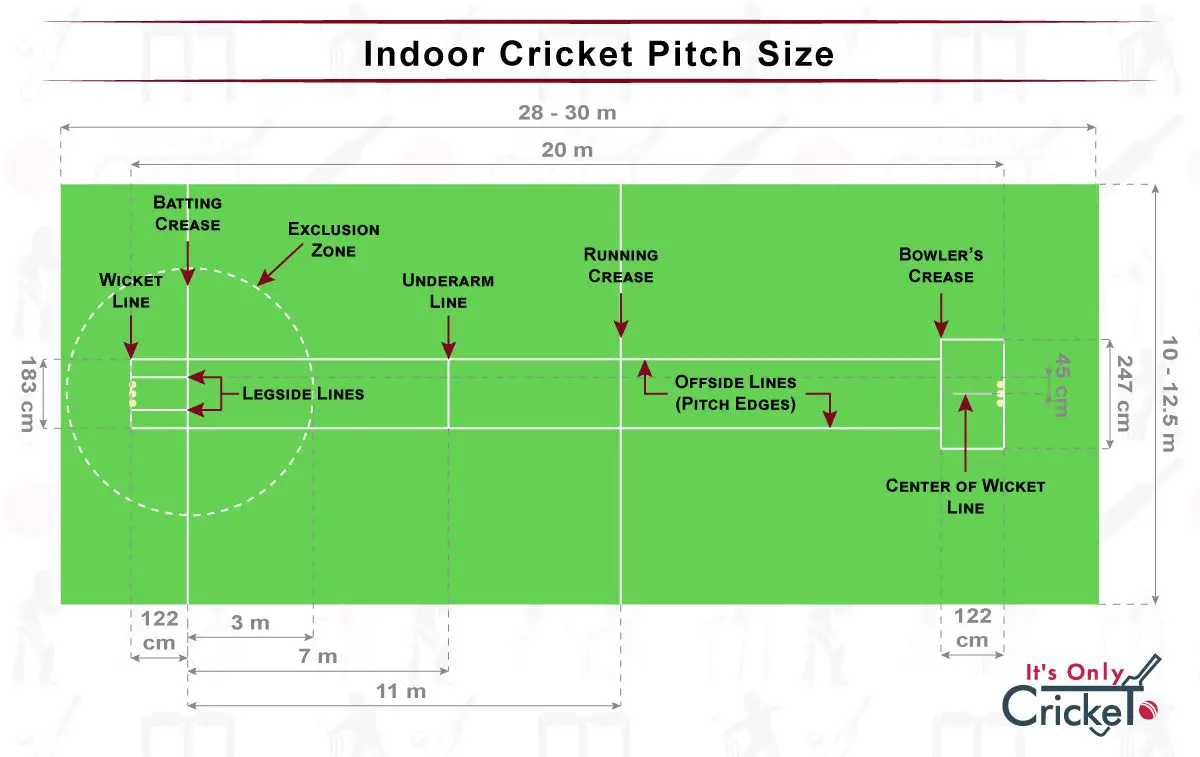
How to Play Indoor Cricket

International Indoor Cricket Rules
It’s important again to make a distinction here: Indoor cricket is a sport in its own right and is entirely different from a regular game of cricket that is played indoors.
There are some similarities between indoor cricket and the conventional game. One of these relates to the size of the wicket which is 22 yards long. Standard cricket bats can be used although there is a lighter version which has been designed for the indoor game. The preference is down to the batter.
Two teams consisting of six players per side play a single innings match. Those innings last for 12 overs. Each batsman bats for four overs while each bowler can deliver two overs. The game is designed so that every player on each side plays a full part in the game.
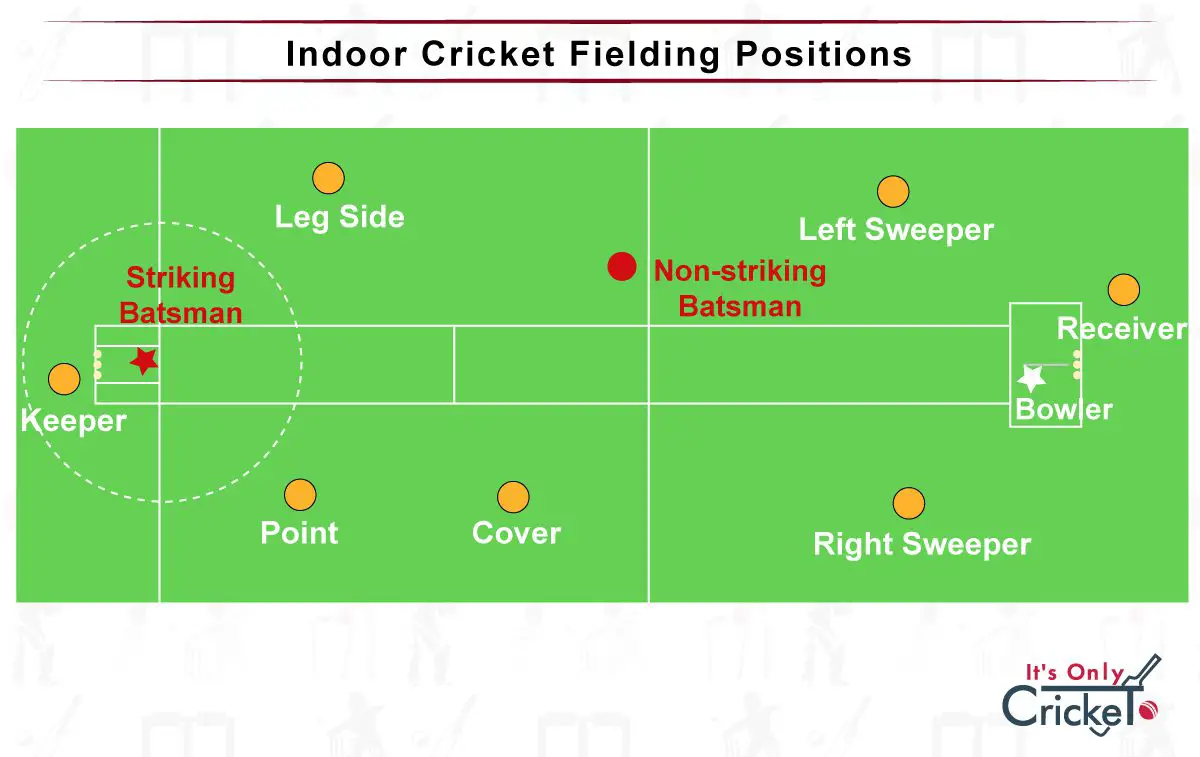
Conventional methods of dismissal are used so players can be bowled, caught and run out. However, when dismissed, the batsman remains in the game unless their four overs have been used up. After every dismissal, five runs are deducted from the team’s total.
As with regular cricket, the aim is to score more runs than the opposition and there are special scoring zones set up around the playing area.
Scoring Zones in Indoor Cricket
The net is there to stop the ball from leaving the field of play but it also has clearly marked scoring zones. If the batsman hits the ball into these zones, they add the designated amount of runs to the team total.
- Zone B is placed on each side of the court, in front of the batsman, starting from the crease and extending half way down the wicket. One run is scored if the ball hits the net on Zone B.
- Zone C extends from Zone B, at each side of the wicket. It runs from half way down to the back net. Two runs are scored if the ball hits the net in Zone B.
- Zone D is at the very back, behind the bowler. If the ball hits this and it has bounced, four runs are scored. However, if the ball hits Zone D without bouncing, six runs are scored.
Any runs that are accumulated by hitting these zones are known as bonus runs. Batsmen can also score physical runs by running between the wickets. If the ball hits a scoring zone, the batters must complete a physical run in order for the bonus runs to count,
Note that there is also a Zone A which is behind the wicket keeper. However, no runs are scored if the ball hits Zone A.
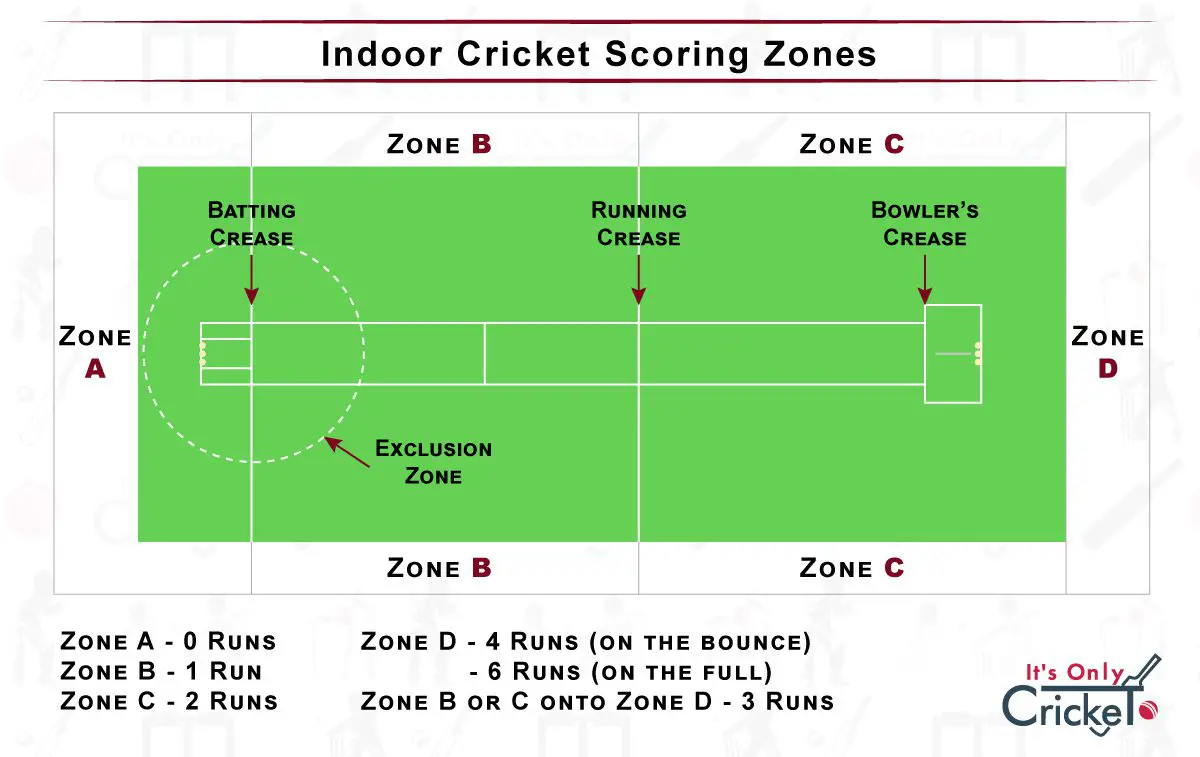
Indoor Cricket Tips
- Try to keep the ball down when you are batting. If the ball hits scoring zones B or C on the full, you can still be caught by one of the fielders. You cannot be caught if the ball hits zone D on the full.
- Batsmen can also be bowled and run out so watch the ball and be careful when running between the wickets.
- Know the rules: Perhaps the most important law relating to indoor cricket is the one relating to bonus runs. A physical run must be taken in order for the bonus to count so, as a batter, do not sit back and admire your shot as it hits the net.
- For fielders, the tip is to remember that you are still in the game even if the ball hits one of those scoring zones. Batsmen can still be run out and they can be caught if the ball remains in the air. It’s a fast paced game so stay alert at all times.
- Fitness is important too. Because indoor cricket is so quick, don’t be tempted to take part if you are nursing any type of injury. Simply wait until you get back to full fitness.
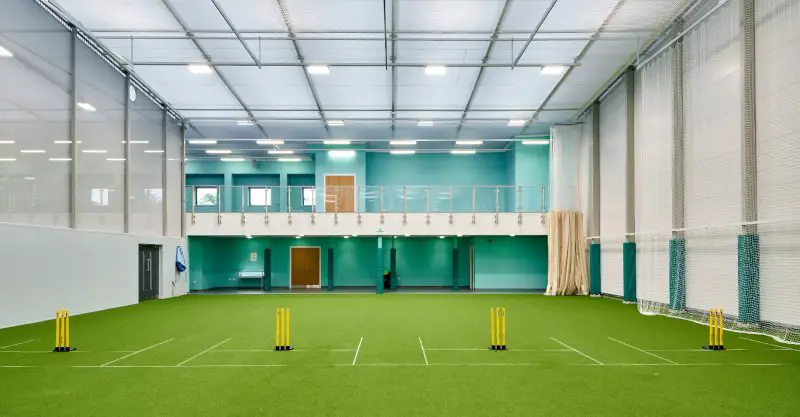
How to Swing an Indoor Cricket Ball
If you’ve read my article on bowling, you’ll know that swing is a very potent weapon. It’s the same in indoor cricket as for the outdoor version of the game and it’s an art that you should master.
Take time to read that write up and practise using the classic outswinger and inswinger grips. Many bowlers who play indoor cricket say that the ball swings more because of its composition so it can be very important to try out both grips.
It’s also been suggested that the indoor cricket ball swings more when bowled by a medium pacer than an out and out fast bowler. That’s a theory rather than a definite fact but it may be worth trying this out.
Indoor Cricket Shoes
Many regular cricketers use metal spikes. These are fine for outdoor cricket but they will not grip the surface in an indoor match. The metal will simply slide and the player would lose their footing.
Turf shoes or anything with rubber spikes and grips will be perfect for indoor cricket.
Indoor Cricket FAQ
How Hard is an Indoor Cricket Ball?
The indoor cricket ball looks like a traditional outdoor ball but there are some important modifications. It has the seam and the same leather casing but the inside is much softer.
Overall, it is about the weight of a rubberised training ball. It can still hurt and that’s why many batters still wear helmets but the softer centre gives it that training ball feel.
Are there any Indoor Cricket Stadiums?
There are indoor clubs in most cricket playing countries around the world but what about a proper stadium? The game is growing at an impressive pace and it will only be a matter of time before big, purpose built venues appear and we see international games between two competing nations.
Over in India, the country is getting ready to welcome its first ever indoor cricket stadium in Rajkot. The Saurashtra Cricket Association announced plans for the SCA Stadium in January 2020.
Potentially, there will be scope for up to 20,000 spectators in a ground that could host conventional cricket too. Indoor cricket will be the focus however for a game that is continuing to grow in popularity right across the world.

